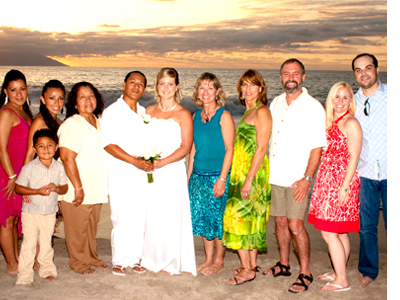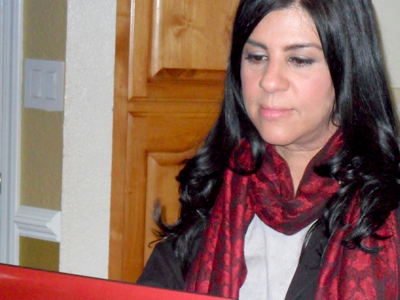
Rates highest among Hispanics and Asians ---
Marriage across racial and ethnic lines continues to be on the rise in the United States, according to a recent report by the Pew Research Center. The share of new marriages between spouses of a different race or ethnicity increased to 15.1% in 2010, and the share of all current marriages that are either interracial or inter-ethnic has reached an all-time high of 8.4%.
According to the report, intermarriage rates are highest among Hispanics and Asians. In 2010, more than a quarter (26%) of Hispanic newlyweds, and 28% of Asian newlyweds, married someone of a different race or ethnicity. By contrast, about one-in-six (17%) black non-Hispanics married non-blacks, and less than one-in-ten white non-Hispanics (9%) married someone who is not white.
 Originally from Guadalajara, Ranu Rojas moved to the Bay Area to join his sister and other family in Oakland. He met his future wife, Christie, at a salsa dance class in 2007 and the two have been together since then. Christie is white and was born and raised in California.
Originally from Guadalajara, Ranu Rojas moved to the Bay Area to join his sister and other family in Oakland. He met his future wife, Christie, at a salsa dance class in 2007 and the two have been together since then. Christie is white and was born and raised in California.Christie and Ranu dated for a couple of years before Ranu had to return to Mexico. They dated long distance for almost a year before Christie took a leave of absence from the financial firm she works for to be with Ranu in Mexico.
“In Mexico, we got a lot of curious people but no problems,” said Ranu about their mixed race relationship. “Mexican people are very accepting, but just curious,” he adds. “Where my mom lives, there are no gringos - they are curious in a good way.”
“My mom was a little worried that she was going to be a liberated girl and party a lot - they have this perception of gringas that they party a lot,” says Ranu.
“But when my mom met Christie, she was very happy,” adds Ranu.
According to a recent report, intermarriage rates are highest among Hispanics and Asians.Christie learned Spanish and so has no problems communicating with her in-laws, none of whom speak English.
When asked if there were any issues or problems with her family about an interracial relationship, Christie says there were none. “My family didn’t think it was strange for me and they knew how happy he made me - my family has been very supportive,” she says.
Ranu admits that he was nervous to see if Christie’s family would accept him. “They were not racial at all - I noticed that right away and felt very comfortable,” he says.
“Here in the U.S. you hear a lot about racism but I have never experienced it,” adds Ranu.
The couple married in Puerto Vallarta in 2009 and their son Luca was born in Guadalajara on Christmas day in 2010. Christie wanted to keep her career so she looked to transfer with her company and they moved to Sydney, Australia a few months ago.
Overall, the happy couple says they’ve experienced no negative aspects about their interracial marriage. Though they did not marry in the U.S., their marriage represents the most common type of intermarriage couple in America - of the 275,500 new interracial or inter-ethnic marriages in the U.S. in 2010, 43% are white/Hispanic couples.
Gabriel and Yamileth Radavero live in Fremont. Gabriel was born and raised in the U.S., and his parents are from Argentina. She is from Nicaragua and she spoke only a little English when they met.
“I grew up in a very Anglo, upscale community,” says Gabriel. “My girlfriends were white and my mother was not used to me bringing home Latinas.”
“Because she wasn’t Argentinian, my mother wasn’t sure what to think,” adds Gabriel. “But eventually, she fully accepted Yamileth.”
With Yamileth’s family, Gabriel says they were pretty open to him but that Yamileth’s brother was a little overprotective.
“He looked at me more like a gringo than a Latino - it took him a while to warm up to me but everyone else accepted me pretty quickly.”


